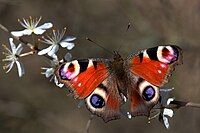
Enhancing photosynthesis at high light levels by adaptive laboratory evolution.
Sign Up to like & getrecommendations! Published in 2021 at "Nature plants"
DOI: 10.1038/s41477-021-00904-2
Abstract: Photosynthesis is readily impaired by high light (HL) levels. Photosynthetic organisms have therefore evolved various mechanisms to cope with the problem. Here, we have dramatically enhanced the light tolerance of the cyanobacterium Synechocystis by adaptive… read more here.
Keywords: high light; evolution; laboratory evolution; photosynthesis ... See more keywords

Sound and light levels in intensive care units in a large urban hospital in the United States.
Sign Up to like & getrecommendations! Published in 2023 at "Chronobiology international"
DOI: 10.1080/07420528.2023.2207647
Abstract: Intensive care units (ICUs) may disrupt sleep. Quantitative ICU studies of concurrent and continuous sound and light levels and timings remain sparse in part due to the lack of ICU equipment that monitors sound and… read more here.
Keywords: intensive care; light levels; hospital; sound light ... See more keywords

0306 Circadian Disrupting Light Exposure within Pediatric Hospital Rooms
Sign Up to like & getrecommendations! Published in 2023 at "SLEEP"
DOI: 10.1093/sleep/zsad077.0306
Abstract: Pediatric patients undergoing stem cell transplant (SCT) often experience extended hospitalizations. Inappropriate lighting during admissions is known to disrupt sleep and circadian health, which can result in worse health outcomes. This study aimed to describe… read more here.
Keywords: health; 0306 circadian; light levels; room ... See more keywords

Seedlings of subtropical rainforest species from similar successional guild show different photosynthetic and morphological responses to varying light levels
Sign Up to like & getrecommendations! Published in 2017 at "Tree Physiology"
DOI: 10.1093/treephys/tpw088
Abstract: Restoration using rainforest species in Australia and elsewhere has been limited to a small number of widely known species, mainly pioneer or early successional species, Using the presumed successional status as a guideline for species… read more here.
Keywords: successional species; irradiance; light; rainforest species ... See more keywords

Learning to feed in the dark: how light level influences feeding in the hawkmoth Manduca sexta
Sign Up to like & getrecommendations! Published in 2021 at "Biology Letters"
DOI: 10.1098/rsbl.2021.0320
Abstract: Nocturnal insects like moths are essential for pollination, providing resilience to the diurnal pollination networks. Moths use both vision and mechanosensation to locate the nectary opening in the flowers with their proboscis. However, increased light… read more here.
Keywords: hawkmoth manduca; light levels; insects; manduca sexta ... See more keywords

Nocturnal lighting in animal research should be replicable and reflect relevant ecological conditions
Sign Up to like & getrecommendations! Published in 2022 at "Biology Letters"
DOI: 10.1098/rsbl.2022.0035
Abstract: In nature, light is a key driver of animal behaviour and physiology. When studying captive or laboratory animals, researchers usually expose animals to a period of darkness, to mimic night. However, ‘darkness’ is often poorly… read more here.
Keywords: nocturnal light; animal research; research; biology ... See more keywords

Effects of Light, N and Defoliation on Biomass Allocation in Poa annua
Sign Up to like & getrecommendations! Published in 2021 at "Plants"
DOI: 10.3390/plants10091783
Abstract: Plants allocate biomass to above- and below-ground organs in response to environmental conditions. While the broad patterns are well-understood, the mechanisms by which plants allocate new growth remain unclear. Modeling approaches to biomass allocation broadly… read more here.
Keywords: low light; biomass allocation; poa annua; light levels ... See more keywords

Elevated Levels of the Cytokine LIGHT in Pediatric Crohn's Disease.
Sign Up to like & getrecommendations! Published in 2023 at "Journal of immunology"
DOI: 10.4049/jimmunol.2200652
Abstract: LIGHT (homologous to lymphotoxins, exhibits inducible expression, and competes with HSV glycoprotein D for herpes virus entry mediator, a receptor expressed by T lymphocytes), encoded by the TNFSF14 gene, is a cytokine belonging to the… read more here.
Keywords: disease; light levels; elevated levels; crohn disease ... See more keywords